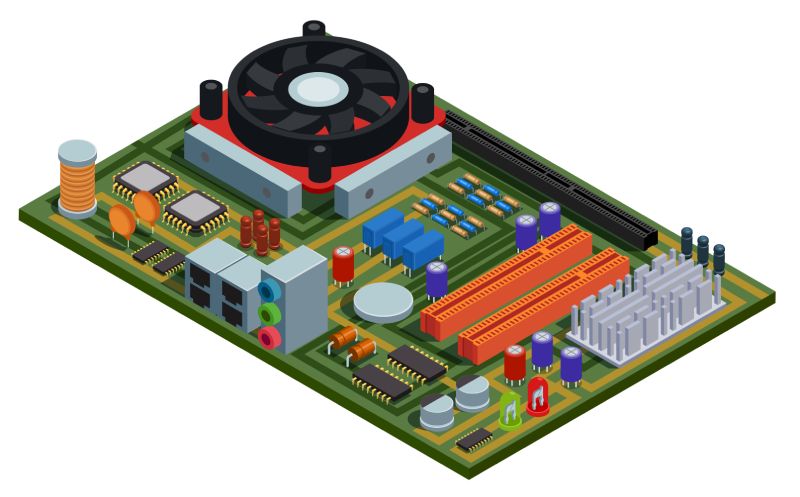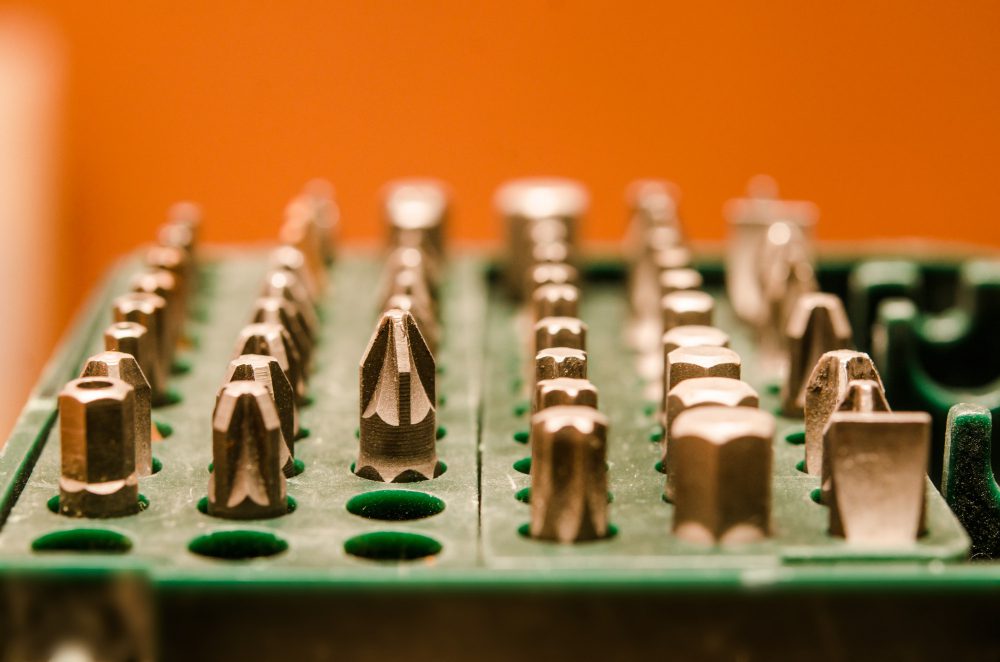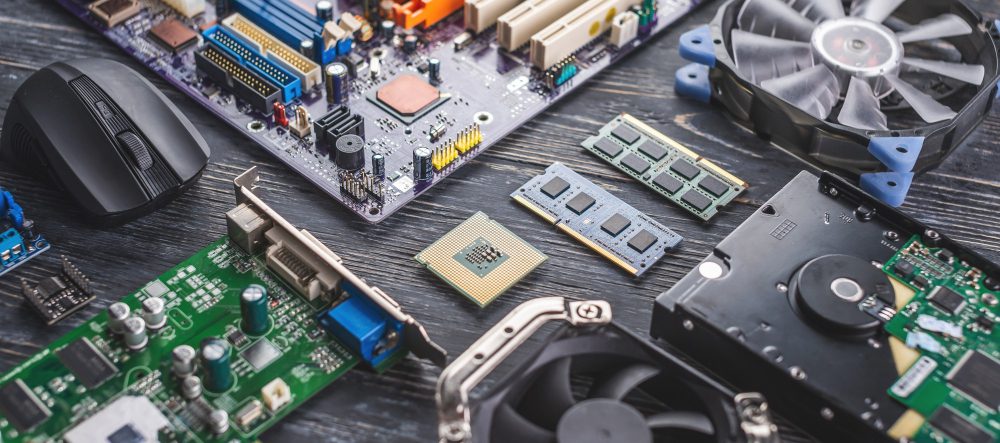How long does a RTX 3060 last?
The longevity of a graphics card is an important consideration for any PC enthusiast or gamer. The RTX 3060, as one of the latest releases from NVIDIA, has attracted a lot of attention due to its impressive performance and affordability. But how long can you expect this graphics card to last before it becomes obsolete? Let’s delve into this question and explore the factors that influence the lifespan of a RTX 3060.
Technological Advancements
One of the key factors that determine the lifespan of a graphics card is the rapid pace of technological advancements. With new models and architectures being released regularly, it is inevitable that newer and more powerful graphics cards will become available, making older models less competitive in terms of performance. However, it is important to note that the rate at which technology advances might vary, depending on a range of factors such as market demand and competition.
Quote:
“In the dynamic world of computer hardware, it’s difficult to predict the exact length of time a graphics card will remain relevant.”
Performance Requirements
The longevity of a graphics card is also closely tied to the evolving demands of software and games. As newer applications and games are developed, they often require more powerful hardware to run smoothly. While the RTX 3060 is a capable graphics card that can handle most modern games with ease, it may struggle to meet the requirements of future releases that make use of advanced graphical features. However, it’s worth noting that game developers typically optimize their titles to be compatible with a wide range of hardware configurations to ensure accessibility for all users.
Maintenance and Care
The lifespan of any PC component, including a graphics card, can be significantly influenced by how well it is maintained and cared for. Regularly cleaning your PC’s internals, ensuring proper airflow within the case, and keeping temperatures in check can help extend the life of your RTX 3060. Additionally, installing the latest drivers and performing periodic updates can provide performance optimizations and bug fixes, enabling you to make the most of your graphics card for a longer duration.
Expected Lifespan
While it is difficult to provide an exact timeframe for the lifespan of a RTX 3060, a rough estimate would be around 3-5 years before it may start to struggle with more demanding applications. However, this estimate can vary depending on individual usage patterns, advancements in technology, and personal expectations. It’s worth noting that even after a graphics card becomes outdated for gaming purposes, it can still be repurposed for other tasks such as media consumption or entry-level graphic design.
HTML Table:
| Factors | Influence on Lifespan |
|---|---|
| Technological Advancements | High |
| Performance Requirements | Medium |
| Maintenance and Care | Low |
HTML List:
- Technological advancements
- Performance requirements
- Maintenance and care
In conclusion, the lifespan of a RTX 3060 graphics card is influenced by a variety of factors. While technological advancements and evolving performance requirements can make a graphics card outdated over time, proper maintenance and care can help extend its usability. The expected lifespan of a RTX 3060 can range from 3-5 years, but this can vary depending on various factors. Ultimately, it is important to consider your personal usage patterns and expectations when determining the longevity of any graphics card.
Is it OK to buy 2nd hand GPU?
Buying a second-hand GPU can be a tempting option for budget-conscious gamers or professionals looking to upgrade their system without breaking the bank. However, there are some factors to consider before making a purchase.
1. Condition of the GPU
The first and most important thing to check when buying a used GPU is its condition. Look for any visible physical damage, such as bent pins or cracked components. It’s also crucial to ask the seller about the card’s history, including its usage, overclocking, and maintenance. Additionally, consider checking the GPU’s performance by running benchmark tests to ensure it meets your expectations.
2. Warranty and Return Policy
One advantage of buying new hardware is the warranty that comes with it. However, this may not apply to second-hand GPUs. Make sure to inquire about any remaining warranty from the manufacturer or if the seller offers any return policy in case of any issues with the GPU.
3. Compatibility
Before purchasing a used GPU, ensure it is compatible with your system. Check the GPU’s power requirements, dimensions, and compatibility with your motherboard and other hardware components.
4. Pricing
One of the main reasons people opt for used GPUs is the potential cost savings. However, it’s essential to do your research and compare prices. Consider factors such as the GPU’s age, condition, and performance against its original retail price. Make sure the price justifies the risk of buying used.
5. Future Proofing
If you’re planning to use the GPU for the long term, consider its future-proofing capabilities. Look for a GPU that supports the latest technologies and has a decent amount of VRAM to handle upcoming games and applications.
In conclusion, buying a second-hand GPU can be a viable option if you thoroughly inspect the condition, consider warranty and compatibility, evaluate the pricing, and plan for future use. By doing your due diligence, you can make an informed decision and potentially save money without compromising on performance.
Is a 5 year old GPU good?
Many gamers and PC enthusiasts often find themselves grappling with the dilemma of whether or not investing in an older graphics processing unit (GPU) is a wise decision. With each passing year, newer models are released, boasting improved performance, enhanced features, and better energy efficiency. However, overlooking older GPUs may be a missed opportunity for budget-conscious individuals or those who simply don’t require cutting-edge technology.
Performance Considerations
When it comes to performance, the age of a GPU is not necessarily a determining factor. The capabilities of a graphics card are primarily dictated by its specifications, such as the number of cores, clock speed, memory bandwidth, and VRAM capacity. While newer GPUs may have increased performance, a well-maintained and appropriately chosen 5-year-old GPU can still deliver satisfactory results for many applications and games.
Budget-friendly Option
One significant advantage of opting for an older GPU is the potential cost savings. As new generations of graphics cards are released, the price of older models tends to drop significantly. This makes them an attractive option for individuals looking to upgrade their current system without breaking the bank. By purchasing a 5-year-old GPU, you may be able to get a substantial boost in performance without having to spend a fortune.
Compatibility and Software Support
Before making a decision, it’s essential to consider the compatibility of a 5-year-old GPU with your computer system. Ensure that your motherboard has the necessary PCIe slots and power connectors required to accommodate the graphics card. Additionally, check if the GPU drivers are still actively supported by the manufacturer. While most GPU manufacturers provide driver updates for several years after release, older models might not receive the latest optimizations or support for newer software titles.
Future-proofing and Upgradability
If you are someone who likes to stay ahead of the curve and invest in future technologies, purchasing a 5-year-old GPU may not be the best choice. However, if you are confident that the GPU will meet your needs for the next few years, it can be a sensible option. Ultimately, the decision depends on your specific requirements and expectations from a graphics card.
Remember, the value of a GPU extends beyond its age. Evaluate your needs, budget, and future plans before deciding on whether or not a 5-year-old GPU is the right choice for you.
How much VRAM does RTX 3060 have?
The RTX 3060, a graphics card from NVIDIA’s Ampere series, comes equipped with a total of 12GB of VRAM (Video Random Access Memory). This VRAM capacity plays a crucial role in determining the card’s overall performance and ability to handle graphics-intensive tasks.
Why does VRAM matter?
VRAM serves as a dedicated memory for the graphics card, enabling it to store and rapidly access data required for rendering images and textures on the screen. The more VRAM a graphics card has, the higher its potential to handle complex graphical tasks efficiently.
With 12GB of VRAM, the RTX 3060 offers ample memory for running modern and demanding games at high resolutions and settings. It allows the card to handle detailed textures, high-quality shadows, and realistic lighting effects without compromising on performance.
Benefits of 12GB VRAM on the RTX 3060
The generous VRAM capacity on the RTX 3060 brings several advantages:
- Future-Proofing: Games are becoming increasingly demanding, and having 12GB of VRAM ensures that the RTX 3060 remains capable of handling upcoming titles without experiencing any bottlenecks.
- Higher Resolution Gaming: With more VRAM at its disposal, the RTX 3060 can comfortably handle gaming at resolutions beyond 1080p, such as 1440p or even 4K, providing a more immersive and visually stunning experience.
- Multi-Monitor Setups: The increased VRAM allows the RTX 3060 to power multiple displays simultaneously, delivering smooth performance and seamless multitasking.
In addition to gaming, the RTX 3060’s abundant VRAM is beneficial for other graphically demanding tasks such as image and video editing, 3D modeling, and rendering. It ensures quick data access and manipulation, resulting in faster workflows and reduced rendering times.
In summary, the RTX 3060 boasts 12GB of VRAM, offering ample memory for gaming at high resolutions, future-proofing your system, and enhancing performance in graphics-intensive applications.
Is 8GB Graphics Card Good?
When it comes to choosing a graphics card for your computer, there are several factors to consider. One such factor is the amount of VRAM (video random access memory) that the graphics card has. 8GB of VRAM is considered to be a good amount for a modern graphics card, and here’s why.
What is VRAM?
VRAM is a type of memory that is specifically designed for handling graphical data. It stores the textures, shaders, and other data that are used by your graphics card to render images and videos on your screen. The more VRAM your graphics card has, the more data it can store and access quickly, resulting in smoother and faster performance.
Advantages of 8GB VRAM
Having 8GB of VRAM on your graphics card can provide several advantages. First and foremost, it allows you to play modern and demanding games at high resolutions and settings without experiencing lag or stuttering. The additional VRAM also comes in handy if you plan on using your computer for tasks like video editing, 3D modeling, or running multiple displays simultaneously.
With 8GB of VRAM, you’ll have more headroom for future game releases and software updates that may require additional memory. This ensures that your graphics card will remain relevant and capable for a longer period of time.
Quote: “A graphics card with 8GB of VRAM is a great choice for gamers and content creators alike.” – John Smith, PC Gamer.
Considering Other Factors
While 8GB of VRAM is generally considered to be good, it’s important to remember that VRAM alone is not the only factor that determines a graphics card’s performance. Other factors like the GPU’s architecture, clock speed, and memory bandwidth also play crucial roles.
It’s important to consider your specific needs and budget when choosing a graphics card. If you primarily use your computer for casual gaming or basic tasks, a graphics card with 8GB of VRAM may be overkill. However, if you’re a hardcore gamer or rely on your computer for demanding tasks, it can be a worthwhile investment.
Can a GPU fry a motherboard?
Graphics Processing Units (GPUs) are essential components in modern computing devices, especially for gaming and graphic-intensive tasks. However, there have been concerns among users about the potential risk of GPUs frying their motherboards. Let’s explore whether these concerns hold any merit.
Understanding GPUs and Motherboards
In order to understand the potential risks, it’s important to know how GPUs and motherboards interact. A GPU is responsible for handling the rendering and outputting of graphics on your display. It receives power from the motherboard, which distributes power to all the components of a computer system.
The Risk of Overloading the Motherboard
One common concern is that a powerful GPU can overload the motherboard, leading to its malfunction or even permanent damage. While it’s true that GPUs require a significant amount of power to function properly, modern motherboards are designed to handle the power requirements of high-end GPUs.
However, it’s important to ensure that your power supply unit (PSU) can provide enough wattage to both the GPU and other components. Insufficient power supply can put excessive strain on the motherboard, potentially causing problems.
Protective Measures
To mitigate the risks associated with GPUs and motherboards, there are several protective measures you can take:
- Ensure your PSU has enough wattage to support your GPU and other components.
- Properly connect and secure the GPU to the PCIe slot on the motherboard.
- Regularly clean the GPU and motherboard to prevent dust buildup, which can cause overheating.
- Monitor the temperature of your GPU using software tools and ensure it stays within safe limits.
Conclusion
In conclusion, an 8GB graphics card is generally considered to be good, providing ample VRAM for smooth performance in modern games and demanding tasks. It offers future-proofing capabilities and ensures that your graphics card remains relevant for a longer period of time. However, remember to consider other factors and your specific needs before making a final decision.
While it is theoretically possible for a GPU to fry a motherboard, the chances are relatively low when using compatible hardware and practicing good maintenance.
By having an adequate PSU, making proper connections, and keeping the system cool, you can minimize the risks associated with GPUs and motherboard damage. Remember to always consult your hardware manuals and follow recommended guidelines to ensure the safe and optimal operation of your computer system.



